#graeme little
Text
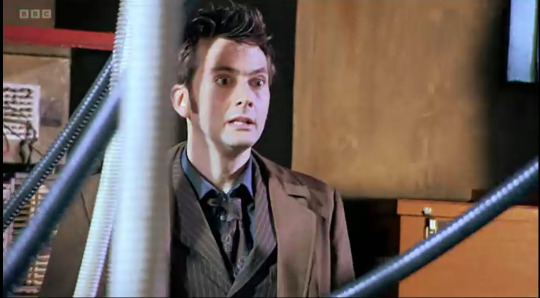
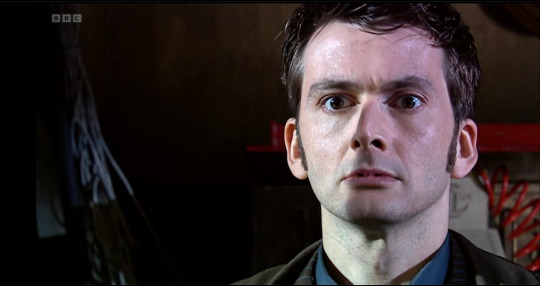



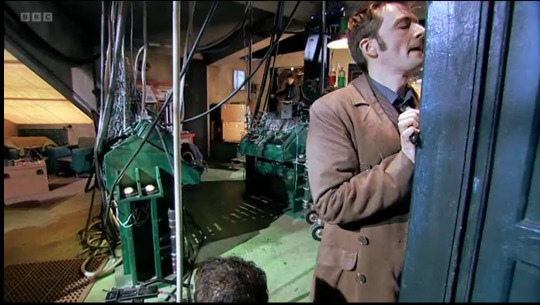
obsessed with the only 5 seconds of face-to-face interaction ten and jacobi!master have
#finishing the s3 confidentials#pls can we get graeme harper again at least for 1 little jaunt#the man has such sensibility for getting the right iconic performances#60threwatch
22 notes
·
View notes
Note
Likely things involving a lot of melted ice cream, lots of praise and attention and endless belly rubs until the little guy is just putty in my hands unable to form a coherent thought for more than two seconds.
-🍑
calling him a “little guy” when he’s already chugged a carton of melted ice cream would only convince him he hasn’t had enough. that poor stuffed tummy…good thing it’s getting lots of attention. you better be ready for lots of whining and moaning, he’s so pathetic and noisy when his belly is full and pampered
#sunny answers#don’t give matty a complex about being little he’ll only want to get huge#if matty could get taller than graeme somehow he would be such a belly bully#🍑 anon
7 notes
·
View notes
Text
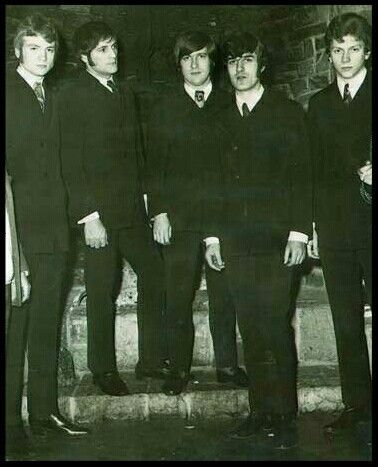
Baby classic-era Moodies!
#The Moody Blues#this had to be when Justin and John JUST joined the band#Justin Hayward#Mike Pinder#Graeme Edge#Ray Thomas#John Lodge#look at how little they are!
17 notes
·
View notes
Note
.... .- ...- . / -.-- --- ..- / . ...- . .-. / .... . .- .-. -.. / --- ..-. / - .... . / . .-.. . ...- . -. - .... / .... --- ..- .-. / -... -.-- / --. .-. .- . -- . / -... .- ... . / ..--.. / - .... . .-. . / .. ... / .- / .--. ..- --.. --.. .-.. . / --- -. / --- -. . / --- ..-. / - .... . / .--. .- --. . ... / - .... .- - / .. ... / .. -. / -- --- .-. ... . / -.-. --- -.. . / .-.-.-
"Have you ever heard of the eleventh hour by Graeme Base? There is a puzzle on one of the pages that is in morse code."
No I haven't heard of that!! Although now I'm certainly curious about having a look at it 👁️
#ask#morse code#this was a though one to crack because i got a little hung up on eleventh hour and the name for a moment#but super fun message to crack and certainly will look up the eleventh hour by graeme base now
11 notes
·
View notes
Text
cosy goodies
9 notes
·
View notes
Photo

Graeme Thomas King
Facts
June 21, 1991
English actor
Filmography
Jeremy [Pretty Little Liars: The Perfectionists: 2019]
Nathan [Snowflakes: 2017]
Clark [No More Lonely People: 2017]
Appearance
brunette
green eyes
Roleplay
playable: young adult
#Graeme Thomas King#male 90s#male english#90s male english#pretty little liars: the perfectionists#snowfalkes#no more lonley people#brunette male young#90s male brunette#green eyes male young#90s male green eyes#young adult male
0 notes
Text
TWO YEARS AGO, by a series of strange coincidences, I found myself attending a garden party at Westminster Abbey. I was a bit uncomfortable. It’s not that other guests weren’t pleasant and amicable, and Father Graeme, who had organized the party, was nothing if not a gracious and charming host. But I felt more than a little out of place. At one point, Father Graeme intervened, saying that there was someone by a nearby fountain whom I would certainly want to meet. She turned out to be a trim, well-appointed young woman who, he explained, was an attorney—“but more of the activist kind. She works for a foundation that provides legal support for anti-poverty groups in London. You’ll probably have a lot to talk about.”
We chatted. She told me about her job. I told her I had been involved for many years with the global justice movement—“anti-globalization movement,” as it was usually called in the media. She was curious: she’d of course read a lot about Seattle, Genoa, the tear gas and street battles, but … well, had we really accomplished anything by all of that?
“Actually,” I said, “I think it’s kind of amazing how much we did manage to accomplish in those first couple of years.”
“For example?”
“Well, for example, we managed to almost completely destroy the IMF.”
As it happened, she didn’t actually know what the IMF was, so I offered that the International Monetary Fund basically acted as the world’s debt enforcers—“You might say, the high-finance equivalent of the guys who come to break your legs.” I launched into historical background, explaining how, during the ’70s oil crisis, OPEC countries ended up pouring so much of their newfound riches into Western banks that the banks couldn’t figure out where to invest the money; how Citibank and Chase therefore began sending agents around the world trying to convince Third World dictators and politicians to take out loans (at the time, this was called “go-go banking”); how they started out at extremely low rates of interest that almost immediately skyrocketed to 20 percent or so due to tight U.S. money policies in the early ’80s; how, during the ’80s and ’90s, this led to the Third World debt crisis; how the IMF then stepped in to insist that, in order to obtain refinancing, poor countries would be obliged to abandon price supports on basic foodstuffs, or even policies of keeping strategic food reserves, and abandon free health care and free education; how all of this had led to the collapse of all the most basic supports for some of the poorest and most vulnerable people on earth.
I spoke of poverty, of the looting of public resources, the collapse of societies, endemic violence, malnutrition, hopelessness, and broken lives.
“But what was your position?” the lawyer asked.
“About the IMF? We wanted to abolish it.”
“No, I mean, about the Third World debt.”
“Oh, we wanted to abolish that too. The immediate demand was to stop the IMF from imposing structural adjustment policies, which were doing all the direct damage, but we managed to accomplish that surprisingly quickly. The more long-term aim was debt amnesty. Something along the lines of the biblical Jubilee. As far as we were concerned,” I told her, “thirty years of money flowing from the poorest countries to the richest was quite enough.”
“But,” she objected, as if this were self-evident, “they’d borrowed the money! Surely one has to pay one’s debts.”
It was at this point that I realized this was going to be a very different sort of conversation than I had originally anticipated. Where to start? I could have begun by explaining how these loans had originally been taken out by unelected dictators who placed most of it directly in their Swiss bank accounts, and ask her to contemplate the justice of insisting that the lenders be repaid, not by the dictator, or even by his cronies, but by literally taking food from the mouths of hungry children. Or to think about how many of these poor countries had actually already paid back what they’d borrowed three or four times now, but that through the miracle of compound interest, it still hadn’t made a significant dent in the principal. […]
But there was a more basic problem: the very assumption that debts have to be repaid. Actually, the remarkable thing about the statement “one has to pay one’s debts” is that even according to standard economic theory, it isn’t true. A lender is supposed to accept a certain degree of risk. If all loans, no matter how idiotic, were still retrievable—if there were no bankruptcy laws, for instance—the results would be disastrous. What reason would lenders have not to make a stupid loan?
[…] For several days afterward, that phrase kept resonating in my head. “Surely one has to pay one’s debts.” The reason it’s so powerful is that it’s not actually an economic statement: it’s a moral statement. After all, isn’t paying one’s debts what morality is supposed to be all about? Giving people what is due them. Accepting one’s responsibilities. Fulfilling one’s obligations to others, just as one would expect them to fulfill their obligations to you. What could be a more obvious example of shirking one’s responsibilities than reneging on a promise, or refusing to pay a debt?
It was that very apparent self-evidence, I realized, that made the statement so insidious. This was the kind of line that could make terrible things appear utterly bland and unremarkable. This may sound strong, but it’s hard not to feel strongly about such matters once you’ve witnessed the effects. I had. For almost two years, I had lived in the highlands of Madagascar. Shortly before I arrived, there had been an outbreak of malaria. It was a particularly virulent outbreak because malaria had been wiped out in highland Madagascar many years before, so that, after a couple of generations, most people had lost their immunity. The problem was, it took money to maintain the mosquito eradication program, since there had to be periodic tests to make sure mosquitoes weren’t starting to breed again and spraying campaigns if it was discovered that they were. Not a lot of money. But owing to IMF-imposed austerity programs, the government had to cut the monitoring program. Ten thousand people died. I met young mothers grieving for lost children. One might think it would be hard to make a case that the loss of ten thousand human lives is really justified in order to ensure that Citibank wouldn’t have to cut its losses on one irresponsible loan that wasn’t particularly important to its balance sheet anyway. But here was a perfectly decent woman—one who worked for a charitable organization, no less—who took it as self-evident that it was. After all, they owed the money, and surely one has to pay one’s debts.
Debt, the First 5000 Years
51 notes
·
View notes
Text
murder ballad ballot poll tournament
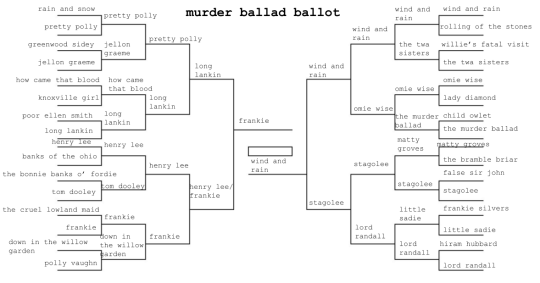
welcome to the murder ballad ballot!
the playlist with all (or most) of the submitted songs and recordings can be found here.
song propaganda is more than welcome, either in the reblogs or through the askbox
polls for round 3 will be posted once per day, starting on tuesday, july 25th
each poll will stay active for a week
all songs were submitted by followers
full list of matchups under the cut
results
round 1
rain and snow vs pretty polly
greenwood sidey vs jellon graeme
how came that blood vs knoxville girl
poor ellen smith vs long lankin
henry lee vs banks of the ohio
the bonnie banks o' fordie vs tom dooley
the cruel lowland maid vs frankie
down in the willow garden vs polly vaughn
wind and rain vs rolling of the stones
willie's fatal visit vs the twa sisters
omie wise vs lady diamond
child owlet vs the murder ballad
matty groves vs the bramble briar
false sir john vs stagolee
frankie silvers vs little sadie
hiram hubbard vs lord randall
round 2
pretty polly vs jellon graeme
how came that blood vs long lankin
henry lee vs tom dooley
frankie vs down in the willow garden
wind and rain vs the twa sisters
omie wise vs the murder ballad
matty groves vs stagolee
little sadie vs lord randall
round 3
pretty polly vs long lankin
henry lee vs frankie - tie
wind and rain vs omie wise
stagolee vs lord randall
round 4 (semifinals)
henry lee vs long lankin vs frankie
wind and rain vs stagolee
matchups
round 5 (finals)
long lankin vs henry lee; long lankin vs frankie
wind and rain vs stagolee
198 notes
·
View notes
Note
Ooh, bird/birding book recs pls! Everything I've picked up lately has been so information-dense, it's unenjoyable. So bonus points for anything that is not that. Also I love your blog so much I always learn something new!
The most recent book I read was The Bedside Book of Birds by Graeme Gibson and I think you might like it. The book is a lovely little collection of different poems, myths, and stories about birds so it’s much lighter on the information and is moreso about what birds mean to people. The love of the avian world shines on every page. It’s sad and funny and beautiful; I highly recommend it!
This isn’t exactly what you asked for, but I’m gonna throw another one in here because pretty much any time someone asks me for a book recommendation I have to push Raptor Red by Robert Bakker. It’s written from the perspective of a Utahraptor and although it takes some artistic liberties I think it’s a really fun read that bird nerds will greatly enjoy.
Thank you for your kind words that’s such a lovely compliment ❤️
51 notes
·
View notes
Text


On July 7, 1960, a typical school day turned into a parent's worst nightmare for Freda Thorne. That morning, she bid farewell to her 8-year-old son, Graeme Thorne, never imagining it would be their final goodbye. Little did she know, Graeme would become the first victim of a ransom kidnapping in Australia's history, sparking a nationwide tragedy that would forever change the landscape of lottery procedures.
Graeme was supposed to meet family friend, Phyllis Smith, for the school run, but when she arrived at their designated spot, he was nowhere to be found. Concern turned to panic as Freda reported her son missing to the police, initiating a desperate search that would grip the nation.
The chilling reality of Graeme's abduction became starkly evident when Freda received a phone call demanding £25,000 for his safe return, accompanied by a horrifying threat to "feed the boy to the sharks" if the ransom wasn't paid by 5PM. Sergeant Larry O'Shea, posing as Freda's husband Brazil Thorne, engaged with the kidnapper, unaware that Brazil had recently won £100,000 in the Opera House Lottery, a fact that had been widely publicized in the media.
Despite efforts to comply with the kidnapper's demands, including instructions to prepare the ransom money, the ordeal took a grim turn. Graeme's empty school case was discovered near the meeting spot with Phyllis Smith, followed by the discovery of his lunch bag and school books miles away.
The agonizing wait for Graeme's return came to a devastating end when his lifeless body was found on August 16, 1960, in Seaforth, Sydney. Wrapped in a tartan blanket, bound with string, and gagged with a scarf, Graeme had been killed within 24 hours of his abduction.
Forensic analysis uncovered crucial evidence linking Stephen Leslie Bradley, a Hungarian migrant, to the crime. Despite fleeing to Britain, Bradley was apprehended in Colombo, Ceylon, and subsequently found guilty, receiving a life sentence. His death in prison on October 6, 1968, provided little solace to a grieving family and a nation in shock.
22 notes
·
View notes
Text
why do I feel like once upon a time is doing straight couples right with every character except emma.
regina and graeme? toxic ofc and not something you’re meant to ship or enjoy, but very believable and interesting, if a little under-explored. snow and prince james? they are literally my parents who raised me and I love them so so much idec about the adultery. belle and rumplestiltskin?? CRAZY. INSANE. HEAD OVER HEELS MADLY OBSESSED WITH THEM FOREVER AND EVER AND EVER OH MY FUCKING GOD
but emma and graeme was honestly pathetic. where did that come from?? they expected me to believe they had this chemistry and this connection all of a sudden when they just didn’t. and idk who this august guy is but I was done with it before it even began, absolutely not there’s just nothing there. as gross as this sounds on a pure acting level, emma and mary margaret have more chemistry than emma does with any man, and that’s not even mentioning the swan queen ship
basically I love all the straight ships except emma’s because she’s a lesbian future guyliner spike rip-off pirate guy be damned
21 notes
·
View notes
Text


I love how unique Mushishi's soundtrack is, and I love folk and trad songs: voilà ✨
(songs info if you're interested:)
Anakrousis and Hymne au Soleil are from the same 1979 album "Musique de la Grèce Antique" (Music from ancient Greece), by the Spanish ensemble Atrium Musicae de Madrid. They specialised in playing pieces from medieval (or older) time periods. For this specific album they used actual music gathered from ancient papyrus and reconstructed ancient instruments to be as accurate as possible. I highly recommend the whole album, it's haunting.
Зора се е, мале, зазорила (translated as "Daybreak Dawned") is a song from Bulgarian folklore, sung here by the well-known Eva Quartet. (the music and lyrics here are probably an arrangement from a pre-existing folk song but I'm not 100% sure)
木曽節 (Kiso Bushi, literally Kiso's song) is a Japanese folk song from the Kiso district, and as its name indicates, it's a song celebrating the place it originated from. The song flows as does the Kiso river, and it's performed here by the Research Institute for Japanese traditional music (pretty self-explanatory).
Каа-Хем (Yenisei river) is technically not a folk song but Yat-Kha is a Tuvan band that relies heavily on tuvan folk sound (such as khöömei/tuvan throat singing) mixed with punk/rock/metal influences and it's very cool!! And this song is of course celebrating the Yenisei river and its beautiful landscape.
La rivière Tanier is a créole lullaby, lamenting the hardship of life as an old woman fishes in the river. Graeme Allwright created this particular arrangement ; he was a French New-Zealander who spent his life travelling and making folk music. He did a lot of different things throughout both his life and his music career, so I guarantee that you'll find something you'll like if you check out his stuff. Also!! he was bestie with Leonard Cohen!
نامي نامي (Nami Nami or Sleep Sleep) is a traditional lullaby from the Middle-East (probably Egypt ?) in which a mother comforts her child with promises of their father's return. It's performed here by the ODO Ensemble ; they're based in France but their goal is to collect and perform ancient music from all over the world.
The Passing of the Elves: yes it's a soundtrack from The Lord of the Rings so I'm stretching the meaning of "folk" a little bit, but Howard Shore drew heavily from Celtic and Eastern aesthetics and tones when composing the different leitmotivs for the Elves and I like how it sounds :) plus they used the actual Sindarin poem so that's cool!
五木の子守唄 (Itsuki no Komoriuta or Itsuki Lullaby) is, to everyone's surprise, a traditional Japanese lullaby from the Itsuki district! The original lyrics are bit grim (a babysitter exhausted by a crying child) , but this is a beautiful instrumental version arranged by Takasue Shibata, and I thought it made for a nice conclusion to this little journey ☀️🌙💧
#mushishiweek2023#mushishi week#Mushishi#i don't have spotify so youtube playlist it is sorryyy :(((#still not sure about the geeky track but oh well#balkan folk songs fuck SEVERELY they have all the best stuff i swear#although this was solely started by anakrousis because it has been living in my head rent free for literal years#bibi
45 notes
·
View notes
Note
C5, D3, and E2?
C5. Who is the best at giving belly rubs?
Graeme for sure, big warm hands to rub your overstuffed, tight belly or just to grab all the new soft chub you’ve slowly been putting on. poor matty has claws and is a little overzealous at times which can lead to some uncomfortable pokes.
D3. Who is more likely to wind up overstuffed because they hate to waste food and are determined to finish up all the leftovers?
I think both of them value the importance of leftovers in regards to meal prep, but if it’s something that doesn’t keep well or is too small for a second meal both of them definitely try to clean their plates. During bulking season though…every meal Graeme eats is polished off and leaves him feeling stuffed.
E2. Which character would be most likely to wind up stuffed picking ripe fruit straight from garden and eating it as they go?
100% Matty. don’t trust him to pick fruit alone. half the berries end up in the bucket and the other half in his mouth. just absentmindedly snacking, his fingers and shirt get stained with juice, his little belly slowly peaking out under his shirt. he doesn’t realize how much he’s eaten until he returns with that bucket nearly empty and his belly absolutely full.
#matty with a little wobbly belly full of juice…🥴#I’m not into berry stuff but sloshing sounds are top tier#sunny answers#oc: matty#oc: graeme
3 notes
·
View notes
Text

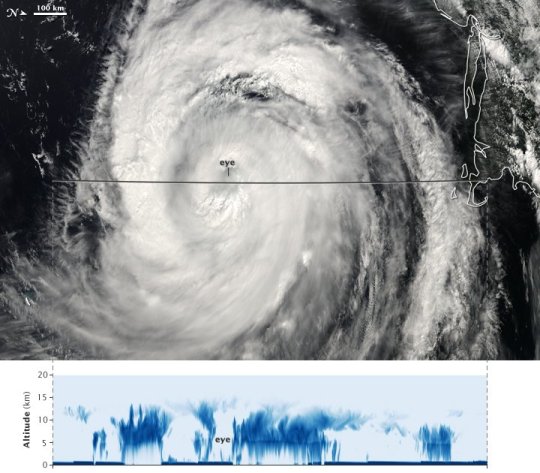
NASA’s CloudSat Ends Mission Peering Into the Heart of Clouds
Over the course of nearly two decades, its powerful radar provided never-before-seen details of clouds and helped advance global weather and climate predictions.
CloudSat, a NASA mission that peered into hurricanes, tallied global snowfall rates, and achieved other weather and climate firsts, has ended its operations. Originally proposed as a 22-month mission, the spacecraft was recently decommissioned after almost 18 years observing the vertical structure and ice/water content of clouds.
As planned, the spacecraft — having reached the end of its lifespan and no longer able to make regular observations — was lowered into an orbit last month that will result in its eventual disintegration in the atmosphere.
When launched in 2006, the mission’s Cloud Profiling Radar was the first-ever 94 GHz wavelength (W-band) radar to fly in space. A thousand times more sensitive than typical ground-based weather radars, it yielded a new vision of clouds — not as flat images on a screen but as 3D slices of atmosphere bristling with ice and rain.
For the first time, scientists could observe clouds and precipitation together, said Graeme Stephens, the mission’s principal investigator at NASA’s Jet Propulsion Laboratory in Southern California. “Without clouds, humans wouldn’t exist, because they provide the freshwater that life as we know it requires,” he said. “We sometimes refer to them as clever little devils because of their confounding properties. Clouds have been an enigma in terms of predicting climate change.”
Clouds have long held many secrets. Before CloudSat, we didn’t know how often clouds produce rain and snow on a global basis. Since its launch, we’ve also come a long way in understanding how clouds are able to cool and heat the atmosphere and surface, as well as how they can cause aircraft icing.
CloudSat data has informed thousands of research publications and continues to help scientists make key discoveries, including how much ice and water clouds contain globally and how, by trapping heat in the atmosphere, clouds accelerate the melting of ice in Greenland and at the poles.
Weathering the Storm
Over the years, CloudSat flew over powerful storm systems with names like Maria, Harvey, and Sandy, peeking beneath their swirling canopies of cirrus clouds. Its Cloud Profiling Radar excelled at penetrating cloud layers to help scientists explore how and why tropical cyclones intensify.
Across the life of CloudSat, several potentially mission-ending issues occurred related to the spacecraft’s battery and to the reaction wheels used to control the satellite’s orientation. The CloudSat team developed unique solutions, including “hibernating” the spacecraft during nondaylight portions of each orbit to conserve power, and orienting it with fewer reaction wheels. Their solutions allowed operations to continue until the Cloud Profiling Radar was permanently turned off in December 2023.
“It’s part of who we are as a NASA family that we have dedicated and talented teams that can do things that have never before been done,” said Deborah Vane, CloudSat’s project manager at JPL. “We recovered from these anomalies with techniques that no one has ever used before.”
Sister Satellites
CloudSat was launched on April 28, 2006, in tandem with a lidar-carrying satellite called CALIPSO (short for the Cloud-Aerosol Lidar and Infrared Pathfinder Satellite Observation). The two spacecraft joined an international constellation of weather- and climate-tracking satellites in Earth orbit.
Radar and lidar are considered “active” sensors because they direct beams of energy at Earth — radio waves in the case of CloudSat and laser light in the case of CALIPSO — and measure how the beams reflect off the clouds and fine particles (aerosols) in the atmosphere. Other orbiting science instruments use “passive” sensors that measure reflected sunlight or radiation emitted from Earth or clouds.
Orbiting less than a minute apart, CloudSat and CALIPSO circled the globe in Sun-synchronous orbits from the North to the South Pole, crossing the equator in the early afternoon and after midnight every day. Their overlapping radar-lidar footprint cut through the vertical structure of the atmosphere to study thin and thick clouds, as well as the layers of airborne particles such as dust, sea salt, ash, and soot that can influence cloud formation.
The influence of aerosols on clouds remains a key question for global warming projections. To explore this and other questions, the recently launched PACE satellite and future missions in NASA’s Earth System Observatory will build upon CloudSat’s and CALIPSO’s legacies for a new generation.
“Earth in 2030 will be different than Earth in 2000,” Stephens said. “The world has changed, and the climate has changed. Continuing these measurements will give us new insights into changing weather patterns.”
More About the Missions
The CloudSat Project is managed for NASA by JPL. JPL developed the Cloud Profiling Radar instrument with important hardware contributions from the Canadian Space Agency. Colorado State University provides science data processing and distribution. BAE Systems of Broomfield, Colorado, designed and built the spacecraft. The U.S. Space Force and U.S. Department of Energy contributed resources. U.S. and international universities and research centers support the mission science team. Caltech in Pasadena, California, manages JPL for NASA.
CALIPSO, which was a joint mission between NASA and the French space agency, CNES (Centre National d’Études Spatiales), ended its mission in August 2023.
TOP IMAGE....An artist’s concept shows NASA’s CloudSat spacecraft in orbit above Earth. Launched in 2006, it provided the first global survey of cloud properties before being decommissioned in March 2024 at the end of its lifespan. Credit: NASA/JPL
LOWER IMAGE....NASA’s CloudSat passed over Hurricane Bill near the U.S. East Coast in August 2009, capturing data from the Category 4 storm’s eye. This pair of images shows a view from the agency’s Aqua satellite (top) along with the vertical structure of the clouds measured by CloudSat’s radar (bottom). Credit: Jesse Allen, NASA Earth Observatory
13 notes
·
View notes
Text
Forgotten Lives 3 Lore Dump
Just a bunch of lore related observations from FL3
Framing Narration (Fourth Doctor/T Baker POV)
Mindbending was not invented by the Time Lords but by an arthropod species with ‘umpteen’ lives.
The Master was better at it than the Doctor at the Academy
George Gallaccio
The Lungs of the Birastrop is two years after Doctor Crocus and the Pages of Fear on Earth
The TARDIS is still a police box
The Birastrop are part of the Cult of Morbius, they do not believe in the Elixir of Life
The Doctor claims he used to be a friend of Morbius, but he seems to be bluffing
Varne can fly the TARDIS
The Doctor believes he made the firecrackers that caused the events of this story
Varne departs and a new companion, Agnes, joins in this story.
The Time Lords have been directing this incarnations efforts from the shadows, he is already considered a renegade by this point.
The firecrackers were actually made by a group of Time Lords on their final incarnations (Led by Sorianius) who had swallowed Deathworm Morphants to merge with the gunpowder.
The Doctor believes he may have killed Morbius
Framing Narration cont.
The Morbius Monster’s lungs are that of a Birastrop
The Doctor was unaware of these lives by this point, though they didn’t seem to be “erased”, merely forgotten.
Robert Holmes
The Doctor put in a healing tank frequently
He seems unfamiliar with this incarnation, and the clothes, but he also clearly has amnesia from being pulled out of the tank. (This is due to him coming out of his infiltrator persona)
By the time he reaches the hall, he’s settled in to his persona again.
His most recent mission prevented ‘a big old civil war’ and dismantled the war machine of ‘a recently deposed President’ (Morbius).
The Morbius civil war occurred during this Doctor’s era
He infiltrated the enemy side as “Bretor Ohm”, this was a new body but not a new incarnation. (Chameleon Arch?)
His failure in his final mission is responsible for Morbius’s escape (In actuality, Sellin used a vocal command to halt him)
Morbius was of House Aurora
Sellin had also given the real Bretor Ohm the Doctor’s biodata as a backup plan, but he escaped and captured Morbius whilst the real Doctor distracted Sellin.
Ohm and the Doctor ended up escaping in a TARDIS (But he was presumably later recaptured)
Framing Narration cont.
Upon reaching Holmes, Morbius realises that the Doctor is an active enemy of his, he redoubles his efforts to push the Doctor back after this point.
Graeme Harper
This Doctor has not been home in a very long time.
Morbius’s was in power during this Doctor’s era. That is why they ran away.
This Doctor has ‘raised families’
Alexandra Justine Collins is travelling with the Doctor
This incarnation disappeared into the Portal of Transformation after contemplating returning to Gallifrey. It is unclear if this is intended to be the cause of this incarnation’s rejuvenation.
Framing Narration cont.
This incarnation was secretive enough that the echo of their persona was still deflecting secrets from Morbius’s intrusion during the mindbending battle years earlier.
The Camfield incarnation horrifically lost his family (Cold Fusion) and the Fourth Doctor is still able to feel the pain even with centuries of distance.
Douglas Camfield
Another companion, Carol Williams. Stowed away on the TARDIS.
After the Loomborn revolt, the Camfield Doctor was forced into hiding.
He has left Dattany for a little while so he could heal from his family’s deaths.
The Doctor and Tallis (Someone who worked for him back on Gallifrey) believe some of his family has escaped the massacre. They go to investigate.
Morbius’s rise to power was occurring during this Doctor’s era.
Cedric and Jilly are still alive on Earth so were not related to the children killed in the Loomborn revolt.
Phillip Hinchcliffe
This Doctor parted ways with Rue eventually and settled down on Earth (Paris 1792).
It had been either 4 or -156 years since then depending on the perspective.
The Order of the Spheres and Time Lords eventually fell out, the Doctor’s handlers and the Unity were different groups.
After settling down on Earth, the Time Lords are still trying to find him. The Sisterhood of Karn uses this to blackmail him to take Françoise to Karn.
Françoise (Swan) becomes a new companion in a stripped down timeship (The Exedra) headed for Karn.
He is being pursued by another renegade called ‘The Citizen’, he wants the Elixir of Life from Karn. The Doctor leaves him to the mercy of the locals on Durcrow
The leader of the sisterhood is O’Hercha.
The Sisterhood has seen the Doctor prior to this.
The Time Lords regain contact with him in this story and intend to bring him ‘back into the fold’.
Framing Narration cont.
Four figures out the Sisterhood owes him a favour after recalling the Hinchcliffe Doctor’s life.
Christopher Baker
Cedric and Jilly’s mother is no longer ‘here’ anymore
She was Joan Smith (Miss Weston). Joan Weston is the “Joan Redfern” that Baker fell in love with. He want by ‘John Smith’ for this time period.
They first landed in early 1938 after Banks-Stewart’s renewal.
The Advisor is working alongside the Unity to disrupt Earth history. He is currently operating as a scientific advisor for the ‘Radio Men’ (Cybermen?)
The Doctor has been ‘playing with his biology’
Jill Smith (Jilly) was born in 1939
Joan Smith eventually died
Robert Banks Stewart
Joan and The Doctor have been associated for four years, it is now 1944, this means he has been on Earth for six years (1938-1944).
The Doctor’s talking owl has no name because ‘birds don’t use names’
The Magus is working with the Nazis.
The Magus had two twins working for him but one perished at the Temple of Gog and Magog.
A sample of the Elixir of Life found its way to a safe in Ireland.
The Magus claims he wants the Elixir of Life to ensure Hitler stands trial for his actions. This is a lie, as he was wounded and is dying.
Maggie O’Hecha stole the Elixir before the Doctor or Magus could get to it, she would later become leader of the sisterhood.
The Sisterhood sent the Doctor to 1945 and he saw and crystallised the end of the War.
Joan Weston’s real name isn’t Joan Weston (Joan Redfern??). In 1944 she and the Doctor left Earth to travel.
Christopher Barry
Morbius was friends with the Doctor according to ‘the story’.
His wife will slap him next time she sees him and hole up in a ‘Tower in Avalon’.
Framing Narration conc.
Morbius had known Christopher Barry’s Doctor, he’d attempted to harness the living story in order to fulfil his future dreams.
The living story had indeed raised Morbius to greatness only to bring him low in the end. He only learns this upon hitting Barry’s memories in the mindbending match, and this is why he goes full rage afterwards.
Four is unsure how many of these reawakened memories he’d retain, but doesn’t care as he embraces being an ever evolving story.
#dweu#doctor who#doctor who eu#forgotten lives#pre-hartnell#morbius doctors#obverse books#fl3#the brain of morbius#fourth doctor
18 notes
·
View notes
Text
“After playing lady’s-maid to the new-comer, and putting my cakes in the oven, and making the house and kitchen cheerful with great fires, befitting Christmas-eve, I prepared to sit down and amuse myself by singing carols, all alone; regardless of Joseph’s affirmations that he considered the merry tunes I chose as next door to songs. He had retired to private prayer in his chamber, and Mr. and Mrs. Earnshaw were engaging Missy’s attention by sundry gay trifles bought for her to present to the little Lintons, as an acknowledgment of their kindness. They had invited them to spend the morrow at Wuthering Heights, and the invitation had been accepted, on one condition: Mrs. Linton begged that her darlings might be kept carefully apart from that ‘naughty swearing boy.’
Under these circumstances I remained solitary. I smelt the rich scent of the heating spices; and admired the shining kitchen utensils, the polished clock, decked in holly, the silver mugs ranged on a tray ready to be filled with mulled ale for supper; and above all, the speckless purity of my particular care—the scoured and well-swept floor. I gave due inward applause to every object, and then I remembered how old Earnshaw used to come in when all was tidied, and call me a cant lass, and slip a shilling into my hand as a Christmas-box; and from that I went on to think of his fondness for Heathcliff, and his dread lest he should suffer neglect after death had removed him: and that naturally led me to consider the poor lad’s situation now, and from singing I changed my mind to crying.
(Chapter 7)
For the Christmas carol for Nelly to sing in this scene, the 1995 radio drama chose “The Holly and the Ivy”.
youtube
According to Wikipedia, “The Holly and the Ivy” can only be traced to early 19th century for certain, so we don’t know whether it existed in 1777, but it is a reasonable assumption that it might have.
Not to mention, Wuthering Heights the novel itself isn’t free of anachronisms, like when Nelly refers to Heathcliff’s “monomania” when that word hadn’t existed in 1802 as Graeme Tytler pointed out.
@thatscarletflycatcher
16 notes
·
View notes